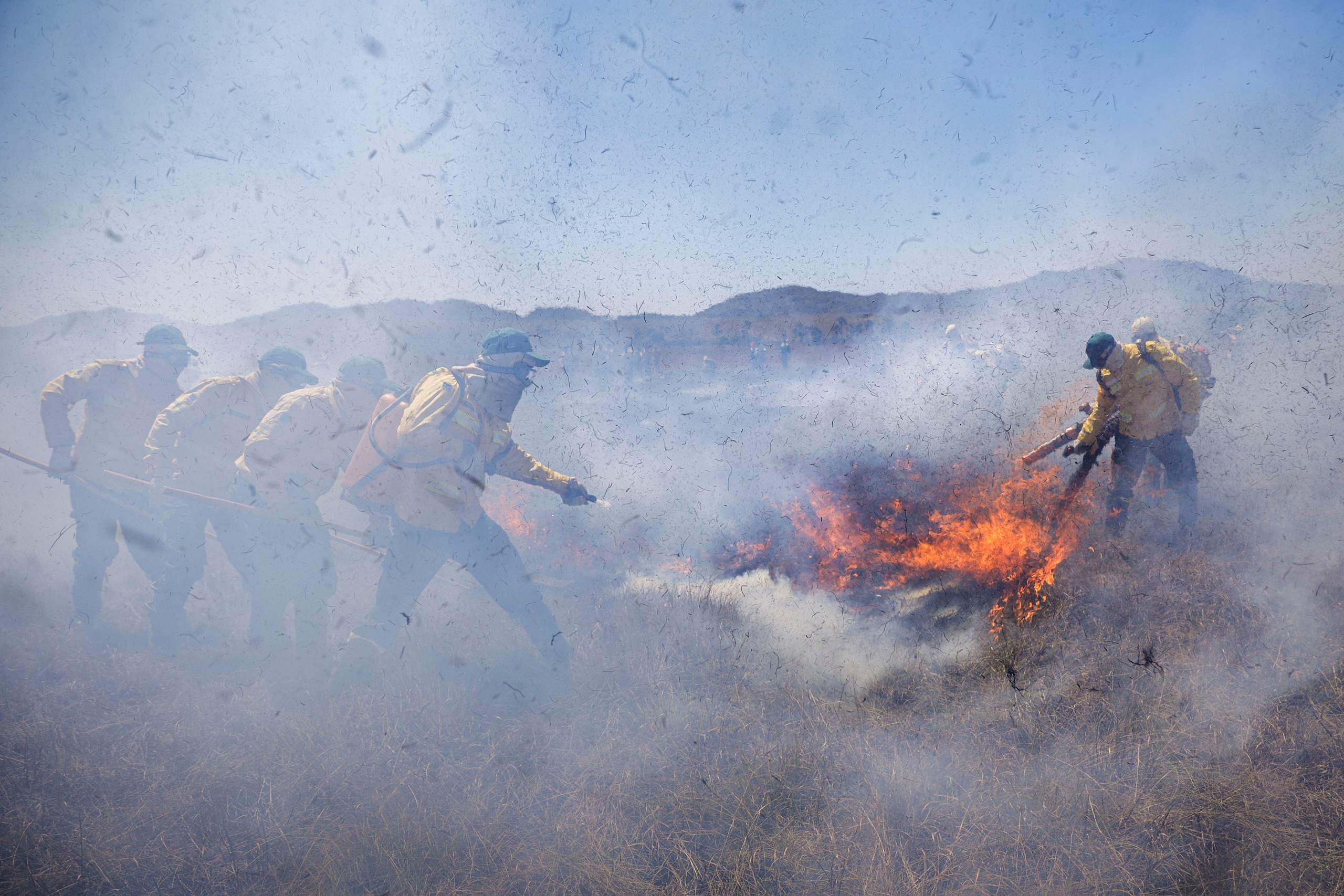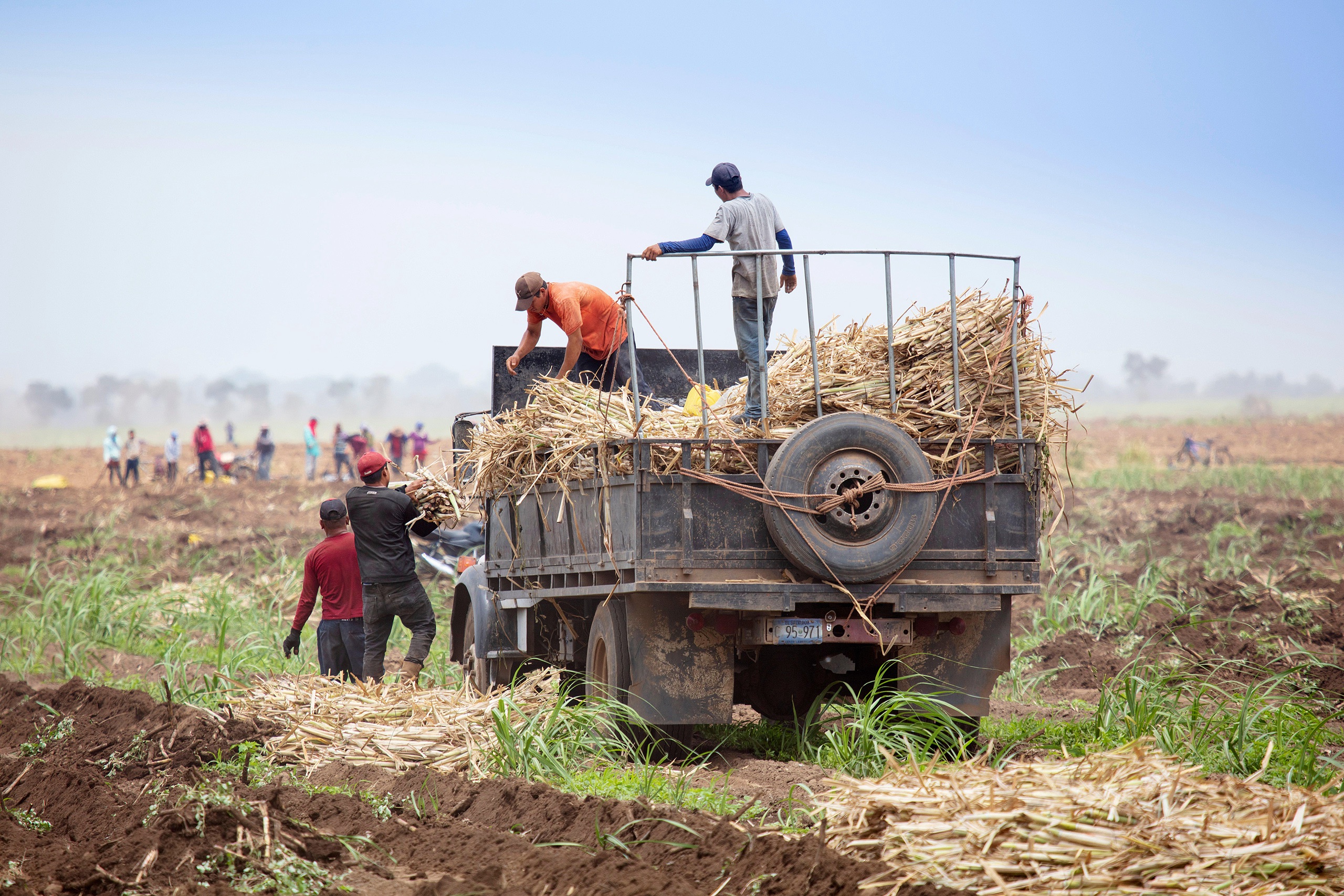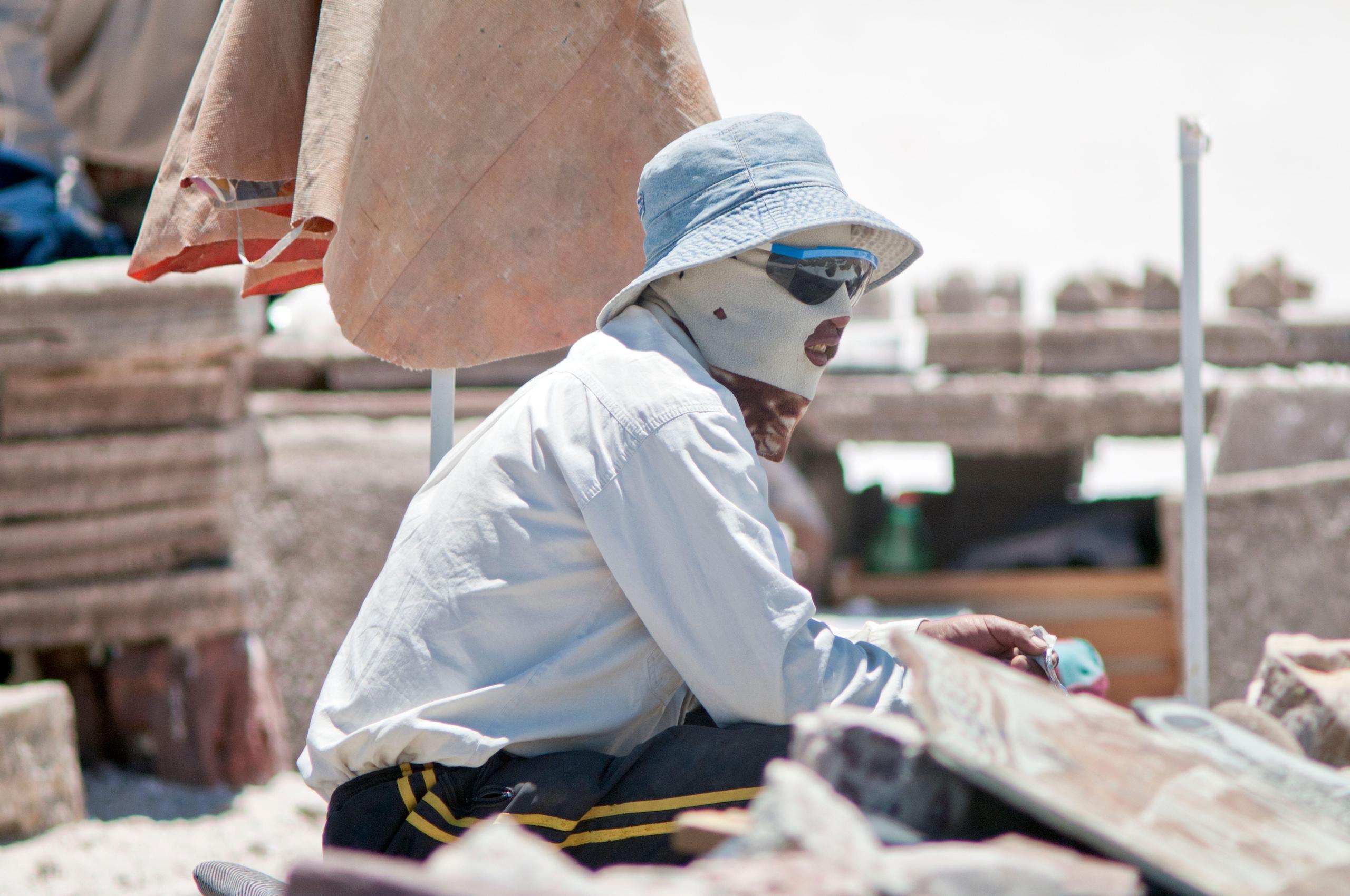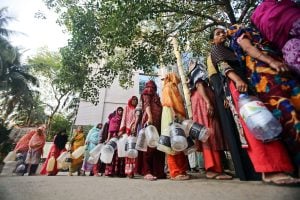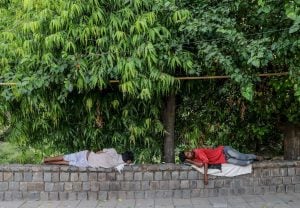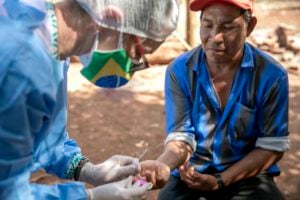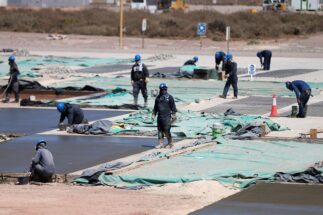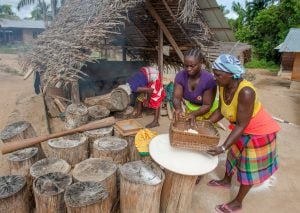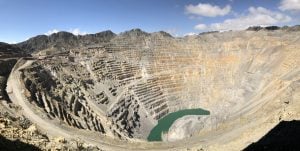Among the many effects that climate change is already having in Latin America, its impact on workers’ health is one that has received comparatively less attention. Rising temperatures directly and indirectly affect human health, which can result in an unhealthy workforce and productivity losses.
In 2023, the average temperature in the region was the highest on record, 0.82C above the 1991-2020 average and 1.39C above the 1961-1990 average, the World Meteorological Organization reported. This has been accompanied by an increase in the frequency and intensity of extreme weather events, such as hurricanes, floods, droughts, forest fires and heatwaves.
Workers in vulnerable conditions, such as those working outdoors and those employed under informal conditions, are the most affected, especially by the heat. This includes farmers, fishers, builders and the tourism industry, but the list is long, and those working in office buildings are also affected.
“Rising temperatures will make certain days even dangerous to work outdoors or in unventilated places, and increased exposure to disasters will disrupt supply chains, affecting productivity too,” Guillermo Montt, a social protection specialist at the International Labour Organization (ILO), told Dialogue Earth.
A 2019 study estimated that, by 2030, 2.5 million outdoor jobs could be lost in the region due to heatwaves, with agriculture and construction likely to be hardest hit. However, the number could be higher if other factors associated with climate change are taken into account, such as impacts from solar ultraviolet radiation, extreme weather events, air pollution and certain diseases.
What risks does climate change bring for workers?
Excessive heat is one of the main climate risks for workers. The ILO estimates that every year, 70% of all workers globally are exposed to excessive heat. Comparing exposure estimates from 2000 to 2020, the organisation reports a 34.7% increase in the number of workers affected.
Maintaining a core temperature of around 37C is essential for the body to continue to function normally. The Intergovernmental Panel on Climate Change has highlighted that physical and cognitive functions are impaired if this exceeds 38C, reaching “heat exhaustion”. Beyond 40.6C, the body enters “heat stroke”, and there is a sharp increase in the risk of organ damage, loss of consciousness and even death.
Agricultural workers are particularly exposed to these risks. Studies in the United States found that agricultural workers were 35 times more likely to die from excessive heat than other occupations, during 2000–2010.
Beyond outdoor work, occupations requiring heavy clothing or protective equipment, such as firefighters, are also at greater risk. Office workers can also be at risk if workplaces are not adequately equipped.
Solar ultraviolet radiation is a particular problem for outdoor workers, such as farmers. They are estimated to be exposed to radiation doses at least two to three times higher than indoor workers, and their daily exposure is reportedly often five times higher than internationally recommended limits.
Increases in the frequency and severity of extreme weather events also pose a threat to the well-being of many workers. When they occur, there is an increased demand for emergency service workers, who must work harder and in difficult circumstances, putting their health at risk. In emergency situations, doctors, firefighters and construction workers may be exposed to hazardous substances and biohazards and suffer traumatic injuries. In addition, the stress of such situations can leave these workers physically and emotionally exhausted, and at risk of mental health disorders.
Workers in all sectors, especially those working outdoors, are also exposed to air pollution – a problem that not only drives climate change, but one that is also being exacerbated by it. Drier and hotter conditions can increase air pollution, such as ozone, while heatwaves made more intense and frequent by climate change are driving more wildfires, which release harmful emissions and matter into the air.
Outdoor workers are also particularly exposed to vector-borne diseases, such as dengue fever, of which South America has faced record outbreaks in the past year. Climate change is expected to alter the seasonality, distribution and occurence of these diseases, which are most prevalent in tropical and subtropical areas.
Climate change can also increase soil erosion and decrease essential nutrients for plant growth, such as nitrogen. This may lead agricultural workers to increase their use of chemical fertilisers and pesticides in attempts to maintain yields, with health impacts linked to exposure to such inputs.
What is happening in Latin America?
The Lancet Countdown, an independent think tank that studies the links between public health and climate, has found that high temperatures are limiting the productivity of workers in Latin America, affecting their health and livelihoods and aggravating the effects of the economic crisis affecting many countries in the region.
In its latest report, which analyses 34 indicators, the Lancet Countdown found that heat-related mortality in the region increased 140% when comparing 2000-2009 with 2013-2022. In addition, it reported particular vulnerabilities for infants and people over 65, who were exposed to 248% and 271% more heatwave days, respectively, between 2013 and 2022, when compared to 1986-2005.
The report also found that the risk of dengue transmission increased by 54% from the period 1951-1960 to 2013-2022, a finding in line with the recent increase in cases. In addition, 11 countries saw an increase in the number of days on which people were exposed to high fire danger in the period 2013-2022, when compared to 2001-2010. “All the health impact data keeps getting worse, there has not been a single improvement,” said Stella Hartinger, director of The Lancet Countdown for Latin America, analysing the report. “There is an increase in exposure to heatwaves, to forest fires, to higher temperatures. All the data is going up.”
In a 2022 study, researchers analysed the effects of higher temperatures on labour productivity in cities in eight countries in the region. On average, an annual temperature increase of 1C was found to be associated with a 1% decline in wages, with youth and informal workers most affected.
The ILO describes South and Central America and the Caribbean as having high levels of exposure to excessive heat. While in 1995, 0.3% of total working hours were estimated to have been lost due to heat stress, by 2030 the figure is expected to reach 0.6% – said to be the equivalent of 2.9 million full-time jobs. More than half of the losses in 1995 were in the agriculture sector, though this share is projected to decline to 39% by 2030, given the lower prevalence of agricultural employment.
Guyana is the country most affected. The ILO analysis estimates that heat stress could lead to the loss of 3% of its gross domestic product by 2030, compared to 1.6% in 1995. Other tropical countries such as Ecuador, Honduras, Suriname and El Salvador would also be severely affected, in some cases with a tripling in the impact on GDP.
Dialogue Earth spoke with Deissy Martínez-Barón, a regional leader for climate action in Latin America and the Caribbean at the Alliance Bioversity International & CIAT (the International Centre for Tropical Agriculture). She said that agricultural workers are already being affected by excessive heat and vector-borne diseases, but that information on the extent of this is lacking.
“The emphasis so far has been on the effects on crops, but we need to know more about the workers,” said Martínez-Barón. “The effects they are already experiencing due to climate change should be a wake-up call to give more importance to social research and not only to the productive part. It is something we are beginning to study.”
What are governments doing about heat risks?
Halshka Graczyk, an occupational health and safety specialist at the ILO, described how workers in the region face a “cocktail of risks that exacerbate each other”. She said that governments and the private sector are gradually responding to the risks, though still without a unified approach to policy implementation.
In response to excessive heat, some countries in the region are including the risks as a priority in national occupational health and safety policies and strategies. National legislation often establishes, for example, a range of acceptable temperatures depending on the specific circumstances of the workplace.
Brazil has set tolerance limits for heat exposure above which work must be suspended, based on wet-bulb globe temperature (WBGT) limits, a measure of apparent temperature that estimates the effect of temperature, humidity, wind and radiation, and how this affects humans. In Costa Rica, meanwhile, employers have been obliged since 2015 to protect workers from heat stress with adequate clothing and hydration.
The ILO recommends giving workers breaks to slow down the accumulation of body heat, in addition to hydration. It advises drinking 750 millilitres of water every hour to reduce stress on occupational health without affecting productivity. Light-coloured, breathable, loose-fitting clothing is also said to reduce heat stress in workers by 0.4C.
Some countries also have legislation relating to the protection of workers against the risks of solar ultraviolet radiation, which define protective measures. In Chile, employers of exposed workers must publish the daily radiation index and provide personal protective equipment.
Some of the measures that can be taken to reduce radiation exposure include the provision of shaded work areas and administrative controls to avoid working in direct sunlight during the hottest hours of the day. In addition, regular use of sunscreen and sun-protective clothing is recommended.
“Our labour code obliges employers to take actions to ensure a healthy and safe environment.,” said Pamela Gana, Chile’s superintendent of social security. “They must incorporate in their emergency plans actions to be taken in case of extreme high temperature exposure and work on prevention, training and dissemination.”
Instruments to protect the most vulnerable workers during extreme weather events have also been introduced. For example, in Uruguay, since 2022, employers of rural workers must suspend any activity when there are risks to workers’ health due to heavy rain, wind or thunderstorms.
The ILO recommends conducting regular safety drills that mimic extreme weather conditions, thus preparing workers for real situations. In addition, it suggests training workers in preventive practices to improve the capacity to respond, and incorporating technology such as drones to monitor temperature.
In some cases, legislation also addresses risks from pesticide use and vector-borne diseases. Costa Rica only allows pesticide application to take place during cool hours of the day, working a maximum of four hours. In Barbados, workplaces must have a vector control programme.
“We have an occupational health council and from there we promote several issues to better prepare for the effects of climate change at work,” said Alexander Astorga, Costa Rica’s vice-minister of labour. “We work on prevention, providing the necessary protection, and educating managers and workers, correcting certain practices.”
Are jobs going to be lost due to climate change?
Roughly 17% of employment in the Americas is estimated to depend directly on ecosystem services, and more than half of these jobs are in the agriculture sector. Climate change is expected to increase environmental degradation and biodiversity loss on ecosystems, which will in turn have negative effects on jobs.
At the same time, the transition to a low-emission economy will bring changes to the region’s workforce. A 2020 report by the ILO and the Inter-American Development Bank projected that while 7.5 million jobs could be lost in Latin America by 2030, notably in the fossil fuel sector, 22.5 million new jobs could be created in sectors such as forestry and renewable energy.
Ensuring just transitions amid these changes would require policy changes in the region, though analysis has found that governments’ climate plans currently make little reference to labour market policies to support workers and businesses in their efforts to adapt to climate change.
“A major challenge is to adequately anticipate these changes and to accelerate the capacity to respond to them,” said the ILO’s Montt. “Our political systems are [currently] better able to deal with emergencies with a rapid outcome than with processes of slow, incremental change.”



